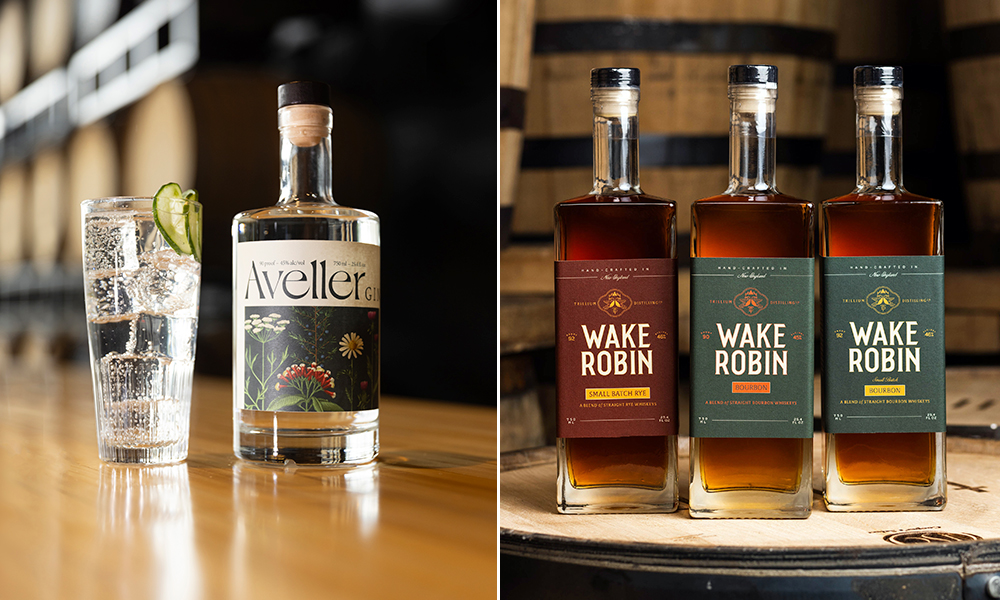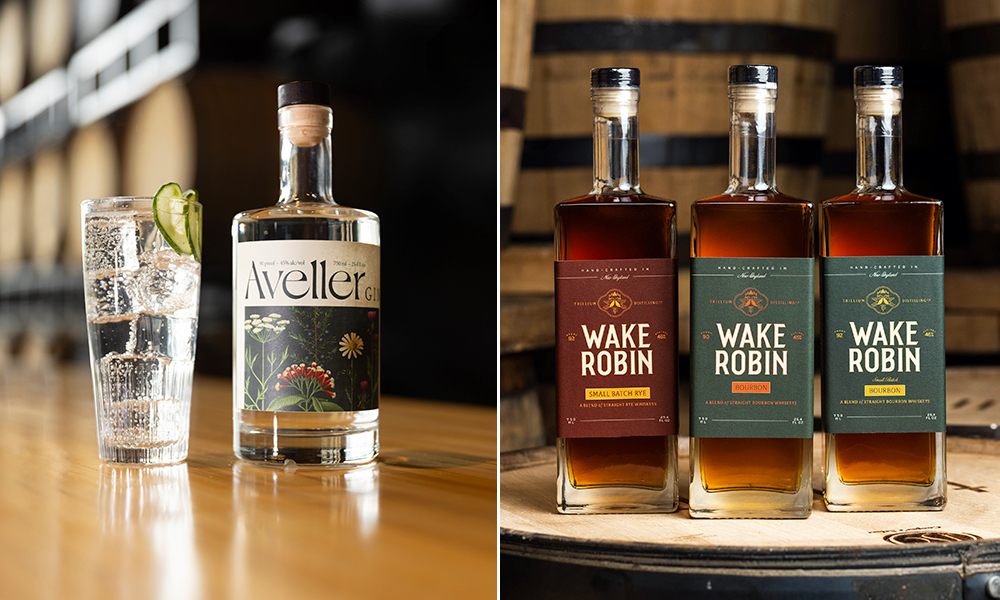The days of beer geeks lining up outside for hours in the hopes of securing a case of canned “freshies” is all but over thanks to consumer changes partly brought on by the pandemic. In fact, some experts have argued we’re entering a new era for craft beer. In 2024, 399 breweries closed. Overall production was down 2%. Gen Z is drinking non-alcoholic THC RTDs (or something like that).
What’s a longtime craft brewery to do? The answer, perhaps: make whiskey.
“I think it was probably about a year-and-a-half, maybe two years into Trillium, that I turned to [wife and co-founder] Esther and said, ‘Boy, we’re about 90% of the way to being a whiskey distiller,’” recalls JC Tetreault of Trillium Brewing. Opened in 2013 in Boston’s Fort Point neighborhood, their brewery was one of the early success stories during the nascent days of hazy IPAs and long lines.
Could expanding a brewery’s beer portfolio to include spirits inadvertently bring more people back to the brewery to discover its beers?
As Tetreault has astutely observed, to make whiskey, you first need to make a mash, which is essentially a beer sans hops. Distill that beer then age it for a bit, and you’ve got whiskey.

Of course, it’s not quite that simple, depending on your state. For the Tetreaults and Trillium, despite having four locations plus a farm, they needed a completely separate distilling space, a completely separate license, and a vision for how to sell spirits to customers who had long seen them as nothing more than an IPA maker.
“There’s a big, broad world of beverages out there,” says Tetreault. “The good news for Trillium is that we had always endeavored to have this breadth of offerings, and we’re not just reacting to the situation.”
A Good Mash
An hour west in Charlton, Mass., another beloved brewery long known for its juicy IPAs has also gotten into the distilling game, and for a similar reason as Trillium.
“All good spirits start from a good mash,” says John Britton, who leads Tree House Brewing Company’s distilling program. He came from more traditional distilling-only operations such as St. George Spirits in the Bay Area and Ann Arbor Distilling in Michigan. “The best breweries in the world have what it takes to make the base for great spirits—how far they want to take it is up to them.”
But you could hardly say Tree House is struggling and that turning to distilling is a move of desperation. Founded in 2011, by the middle of the decade Tree House had become maybe the most acclaimed brewery in the country on the backs of beers such as Julius, Doppelganger, Green, Haze, and Bright. Today, they have satellite locations in Boston, Cape Cod, Deerfield, and Saratoga, N.Y.; a tasting room/golf course in Tewksbury, Mass.; and a 100-acre farm in Woodstock, Conn.
Since 2021, they have also been distilling, focusing on “grain to glass” spirits such as Old Growth Bourbon and Rye, both distilled exclusively from New England grains. All of their spirits start as mashes on the brew deck.
“[We] built out our facility with the same goal in mind as we did the brewery—to be able to create artful spirits at scale,” says Chris Conroy, Tree House’s spirits category sales manager.
Despite a recent spate of breweries turned distilleries such as Trillium and Tree House, this is not, completely, a new trend. A few American craft breweries have been distilling for more than a decade.
Setting the Pace
Oregon’s Rogue (established in 1988) began distilling in 2003; today they even copper their own barrels, one of the few places in the country to do so. Michigan’s New Holland Brewing (established in 1997) added distilling to its portfolio in 2005. California’s Ballast Point (established in 2006) opened San Diego’s first distillery since Prohibition—later known as Cutwater Spirits—in 2006; it was such a financial success that it was sold off to Anheuser-Busch in 2019. Anchor Brewing, regarded by some as America’s first craft brewery, began distilling operations in 1993 with its release of Old Potrero, a single malt rye whiskey.
“I think it was another mountain to conquer and another creative interest to pursue in the drinks industry,” recalls Bruce Joseph, who had started as a brewer at Anchor Brewing 45 years ago before becoming the first master distiller at Anchor Distilling (which is today known as Hotaling & Co.) “The skills I learned as a brewer provided a very solid foundation for whiskey distilling; in fact, about the only new equipment we needed to start distilling was the actual still.”

However, it’s admittedly not quite as simple as distilling beer recipes brewers have been using for a while.
“We’ve got beer recipes that will remain beer recipes and not be the same as our whiskey mashes, by and large,” says Tetreault, noting how whiskeys often use mostly unmalted grains.
Branching Out
But these breweries are not only producing whiskey either. Anchor would eventually become more renowned for its Junipero Gin, arguably America’s first craft gin. Tree House makes everything from rum to fruit brandies to nocino, absinthe, and even shochū (a rice-based distillate more typically seen in Japan). They’ve been able to utilize their existing canning lines to can RTDs such as a Tom Collins, G&T, and even a Paloma, featuring not tequila but their house-distilled agave spirit, Casa de Árbol.
“These [canned cocktails] have enabled us to help bridge the divide between beer and spirits, attracting more people to ‘jump the aisle’ and try something new in the same price range as beer,” says Conroy.
Finback Brewing in New York has a wildly successful gin program under the Halftone label, some made with hops similar to the ones in their beers. 3 Floyds began distilling in 2017, producing spirits such as Bubblegumhead that offer nods to the metal beers that made this Indiana brewery a sensation a decade ago. Trillium currently offers gin, vodka, rum, various amaro and vermouths, and orange liqueur.
“[Producing] each individual spirit is a different discipline in a broader sense than different styles of beer, which I find very challenging,” says Tetreault. But he’s not just doing it for a challenge. Under Massachusetts’ laws, if he wanted to be allowed to offer cocktails in his tasting rooms, he’d need to produce all the elements that went into them.
It has inadvertently been a savvy move for attracting business, allowing Trillium to turn the second floor of its Fort Point taproom and restaurant into the Headroom Hi-Fi Cocktail Lounge. That space has, in turn, lured former Trillium fans who have aged and moved beyond beer, attracting late night, post-dinner crowds while also drawing in a younger cohort that has no interest in beer—and, quite frankly, had never even heard of Trillium when it was just a brewery.
“I have no ego associated with this at all,” says Tetreault. “It just makes me smile when we have new folks into the space and they just look around and say, ‘Oh, my God, I had no idea this [brewery] was here.’”
The post Craft Breweries Take a Shot at Whiskey appeared first on CraftBeer.com.
